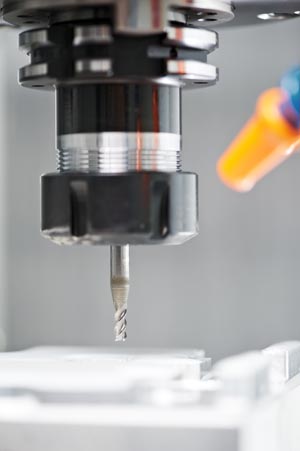How Computer Aided Manufacturing is Changing the World
To help develop this article, click 'Edit this article' above.
Computer Aided Design (CAD) and Computer Aided Manufacturing (CAM) machinery are found in all industries all over the globe. Many factory floors are now entirely void from human interaction, populated only by 'robots'. The introduction of Computer Numerical Control (CNC) machinery has enabled industry to not just cut back on manpower but also to produce a higher quality of precision parts that are entirely free from human error and cheaper.
CNC machining and milling does however require the precision of a trained CAD operator; this is where human intervention is still necessary. Behind every CNC lathe, drill, or machine there is a computer that is using CAD software to transmit the messages to the machine to tell it what to do. Behind that computer there is the software professional who programmed it, behind that the person who designed the software, and behind that the person who designed the computer in the first place.
Although a robot can carry out virtually any task required of it in the field of CNC engineering, highly trained professionals are required to monitor these robots and ensure they do what they are programmed to.
On a factory floor you will see many CNC lathes, drills, and machines at work, and no one anywhere to be seen. Some setups are left to run overnight by themselves; this is made possible by the fact that on detection of an error by the computer, the CAD software will shut down the machine in question until an engineer can attend.
Computer aided design is used in a huge range of applications in the modern world; from mass producing car parts to boring out metal tubes, CNC milling can quickly carry out tasks that it used to take people many hours to do. CAD software allows for further precision, and CAD design has virtually put an end to hand drawings; with precise vector lines being used by CAD software. The human brains are still present behind the design, but the human error is not.
CNC is changing the world that we live in, from something as simple as making a tin can perfectly round, to engineering aerospace parts. With every advance in technology, precision engineered parts can be made to higher specifications, with more complex designs, and without human error.
--Kristian 11:50, 25 May 2015 (BST)CAM Machine; Bringing you the best in CNC in Bristol
Featured articles and news
UK Infrastructure: A 10 Year Strategy. In brief with reactions
With the National Infrastructure and Service Transformation Authority (NISTA).
Ebenezer Howard: inventor of the garden city. Book review.
The Grenfell Tower fire, eight years on
A time to pause and reflect as Dubai tower block fire reported just before anniversary.
Airtightness Topic Guide BSRIA TG 27/2025
Explaining the basics of airtightness, what it is, why it's important, when it's required and how it's carried out.
Construction contract awards hit lowest point of 2025
Plummeting for second consecutive month, intensifying concerns for housing and infrastructure goals.
Understanding Mental Health in the Built Environment 2025
Examining the state of mental health in construction, shedding light on levels of stress, anxiety and depression.
The benefits of engaging with insulation manufacturers
When considering ground floor constructions.
Lighting Industry endorses Blueprint for Electrification
The Lighting Industry Association fully supports the ECA Blueprint as a timely, urgent call to action.
BSRIA Sentinel Clerk of Works Training Case Study
Strengthening expertise to enhance service delivery with integrated cutting-edge industry knowledge.
Impact report from the Supply Chain Sustainability School
Free sustainability skills, training and support delivered to thousands of UK companies to help cut carbon.
The Building Safety Forum at the Installershow 2025
With speakers confirmed for 24 June as part of Building Safety Week.
The UK’s largest air pollution campaign.
Future Homes Standard, now includes solar, but what else?
Will the new standard, due to in the Autumn, go far enough in terms of performance ?
BSRIA Briefing: Cleaner Air, Better tomorrow
A look back at issues relating to inside and outside air quality, discussed during the BSRIA briefing in 2023.
Restoring Abbotsford's hothouse
Bringing the writer Walter Scott's garden to life.
Reflections on the spending review with CIAT.
Retired firefighter cycles world to raise Grenfell funds
Leaving on 14 June 2025 Stephen will raise money for youth and schools through the Grenfell Foundation.
Key points for construction at a glance with industry reactions.
























